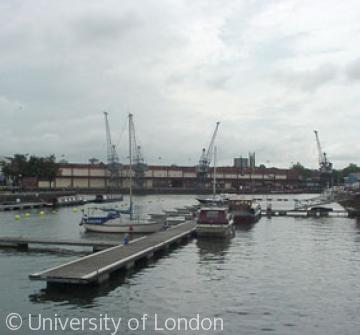Quayside

Bristol, built at the bridging point of the Frome and Avon rivers in Saxon times, has been an important port for centuries. For most of the 1700's the city was Britain's second largest and most important port after the Port of London, and this brought great wealth and trade to some of the city's inhabitants. Much of that wealth depended not on the slave trade itself but on the trade in goods produced by Africans enslaved on plantations in the Americas and the Caribbean.
This modern scene shows that the once busy quayside is now used for leisure. The Severn Estuary and River Avon are tidal, which means that strong currents push the tide in and out of the mouth of the two rivers. This deposits a great deal of thick mud and silt along the channel approaching Bristol. There are also several very sharp bends in the river before you reach Bristol, and so as ships got larger fewer could risk navigating the difficult tides, mud banks and bends. Today the modern port is 11 miles outside the city in deeper water at Avonmouth.
Content generated during research for the paperback book 'Bristol: Ethnic Monorities and the City 1000-2001' (ISBN 13 : 978-1-86077-477-5 ) for the England's Past for Everyone series










